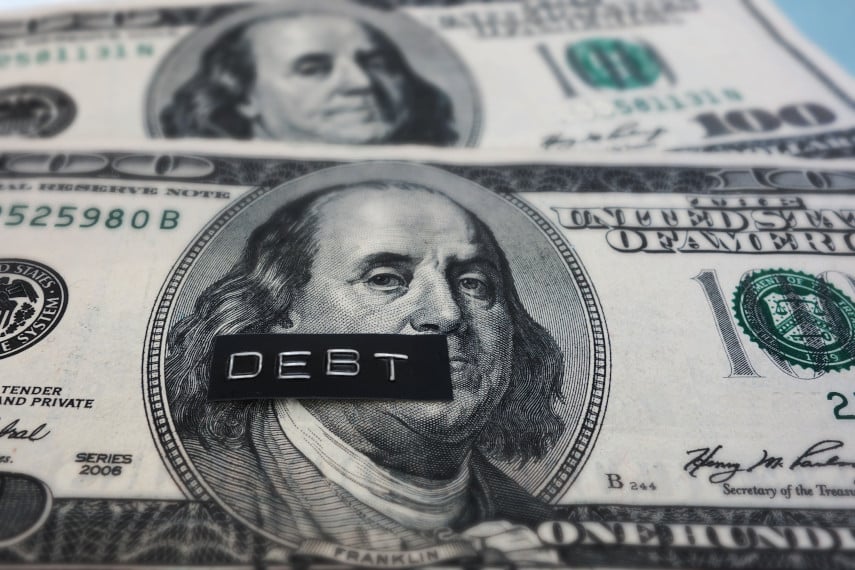
Risk is an aspect of life that just can’t be overcome. No matter what you do or where you go, you’re always going to have to deal with risk. Nowhere is that more obvious than when it comes to investing your money.
Part of investing is dealing with the risk that you may lose some of the money that you’ve invested. It’s a worrying thought for many investors, and one that many may not want to think about. Many investors look at bull markets and think that it’s normal for markets to go one way – up. But the reality is that markets can drop significantly in short periods of time, wiping away years of investment gains.
Investors who understand that risk and who consequently try to hedge against that risk are constantly looking for the safest way to invest money. While the safest investments for you are ultimately those that fit your particular risk profile, there are a whole slew of assets that are generally considered safe for investors due to their minimal risk of loss.
Among those safe investment assets are bank accounts, certificates of deposit (CDs), US Treasury securities, money market accounts, and fixed annuities. For those looking to keep their money safe and outside the mainstream financial system there’s even the option of a gold-based IRA. But at the end of the day the decision on how to safely invest your money is up to you.
5 of the Safest Ways to Invest Your Money
No investment is ever perfectly safe, but there are many that can help minimize investors’ risk of loss. The downside to many of these investments, however, is that because of their low risk, any gains they make may be minimal.
There are least five safe investment options that many investors take advantage of: savings accounts, CDs, precious metals IRAs, money market accounts, and fixed annuities. Each of those safe investments has its particular advantages and disadvantages, and can play an important role in a properly diversified investment portfolio.
Safe Investment #1: Savings Accounts
Bank savings accounts were once the preferred method of saving money for many a person. Those accounts paid interest on their deposits, with depositors believing that the interest gained more than made up for the fact that gains were far less than investing that money in stocks or bonds.
The perceived safety of banks and the relative rarity of bank failures gave rise to the phrase that something was “as safe as money in the bank.” Savings accounts were considered a guaranteed way to keep your money safe while still earning a return on your investment.
Unfortunately decades of progressively lower interest rates spurred by central bank monetary policy have obliterated the ability of anyone to grow their money through a savings account. Whereas once bank deposits were safe investments where depositors could expect to earn 3% or more on their savings, now the national average for savings account interest rates is 0.09%. With inflation currently in the 2-3% range annually, that means that anyone depositing money into a savings account is losing about 2-3% of their purchasing power each year.
Those low interest rates aren’t likely to change anytime soon, particularly now that the Federal Reserve is once again pushing interest rates lower. While savings accounts are necessary and useful to park temporary cash or to shelter money briefly after asset sales, relying on them for investment gains even over the short term is a sure money loser. Savings accounts may be a safe investment, but from a financial perspective they leave much to be desired.
Safe Investment #2: Certificates of Deposit (CDs)
CDs are perhaps the next best-known form of deposit, categorized as a time deposit. Most CDs are purchased through banks, and they offer a guaranteed interest rate for a fixed period of time.
The major advantage to CDs is that they offer higher interest rates than savings accounts. Right now, CDs are offering interest rates of around 2.5% for a one-year term. CDs are generally considered a safe investment because their risk of default is almost zero.
The downside to CDs is that your money is locked up for the term of the CD, whether that’s 6 months, 1 year, 3 years, 5 years, etc. If you have a sudden need to use that money, or find a better investment opportunity, your money is locked up in that CD until its maturity date. If you want to get your money out before the CD matures, you’ll have to pay a penalty to do that.
The interest rates on CDs are also right around the inflation rate, meaning that you’re not really making real gains. This is why CDs are generally only recommended for investors who have large amounts of disposable cash that they don’t expect or plan to use in the near future. While CDs offer better returns than savings accounts, there are better options out there.
Safe Investment #3: Precious Metals IRA
Precious metals IRAs are an increasingly popular investment vehicle for many investors looking to keep their assets safe. The safety of gold and silver have long made them popular investments for those looking to maintain their wealth in the face of economic turmoil and financial uncertainty. They’re a safe haven like no other asset.
With a precious metals IRA such as a gold-based IRA, investors can invest in physical gold coins or bars. They’re able to use pre-tax dollars to invest in gold, and they won’t owe taxes on their gains until they decide to take a distribution. Investors can even perform a 401(k) to gold IRA rollover, allowing them to roll over existing retirement savings from a 401(k) or similar retirement account into a gold IRA tax-free.
The major benefit of investing in gold is the security that it can bring. It consistently gains in value over the long term, having outgrown stock markets since the gold window was closed in 1971. And as investors during the financial crisis found out, gold can make tremendous gains when financial markets are doing poorly. That makes it one of the safest investments during times of economic uncertainty.
The only drawback is that minimum investments in gold-backed IRAs are generally in the range of $25,000-$50,000, putting them out of the reach of younger investors and those who haven’t saved up enough money for retirement.
Safe Investment #4: Money Market Mutual Funds
Money market mutual funds are considered one of the safest investments around, almost equivalent to savings accounts. In fact, you may very well have a money market mutual fund account at a bank or credit union.
Money market accounts invest in safe, liquid, short-term securities such as US Treasury securities. Because the money in money market accounts can be withdrawn at any time, banks and financial institutions make sure that deposits in these accounts are invested safely. That means that returns on these accounts are generally higher than savings accounts but lower than CDs.
The major advantage to money market accounts is that they offer higher returns than savings accounts while still allowing investors the immediate use of their money if they need it. The major drawback is that money market accounts aren’t insured by the FDIC like savings accounts are. Because they are investment accounts, they can theoretically lose money. That means that when it comes to choosing safe investments, you’ll have to keep that aspect of money market accounts in mind.
Normally that’s not a problem, but in 2008 some money market funds began to experience financial difficulties, forcing the Federal Reserve to step in and bolster investor confidence. In the event of another future financial crisis, money market accounts may not be as safe as many investors think they are.
Safe Investment #5: Fixed Annuities
Fixed annuities are an annuity product that give investors a guaranteed return in exchange for a lump sum payment. Investors pay a lump sum to an insurance company upfront and get regular payments thereafter. Annuities can be for a fixed term of a number of years, or they can be open-ended, lasting until the investor dies.
The advantage of annuities is that they give you a guaranteed and steady source of income. Because many annuities guarantee payments until you die, you can’t outlive your savings. And if you live longer than the insurance company expects, you may end up getting more money than you would have without the annuity. But annuities have drawbacks too.
Just like with CDs, your money is tied up and unavailable to you. So, if you face unexpected expenses and need cash, you may find yourself in a crunch. And because your benefits end when you die, you may end up losing out if you die early, missing out on benefits and not being able to pass anything on to your heirs.
Annuities may be a good choice for those who don’t trust themselves to limit their spending in retirement, or those who are afraid of outliving their retirement savings. But while it may be one of the safest investments, for most investors there are far better choices.
These five investment options each have their pros and cons. It’s up to you as an investor to decide which option is best for you, which fits your risk profile, and which best suits your short-term and long-term investment goals.
With an economy that is showing signs of slowing and a stock market on the verge of a major downturn, now is the time for investors to start thinking about safe investments. Being able to keep your wealth safe and secure can help ensure that your retirement savings will be there when you need them most. Contact the experts at Goldco today to find out how a 401(k) to gold rollover can help protect your hard-earned investments and keep them safe from any market downturn.






